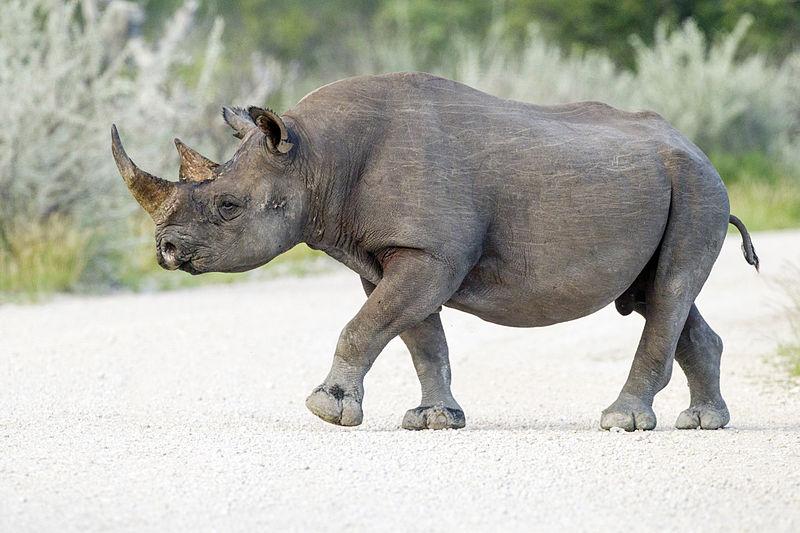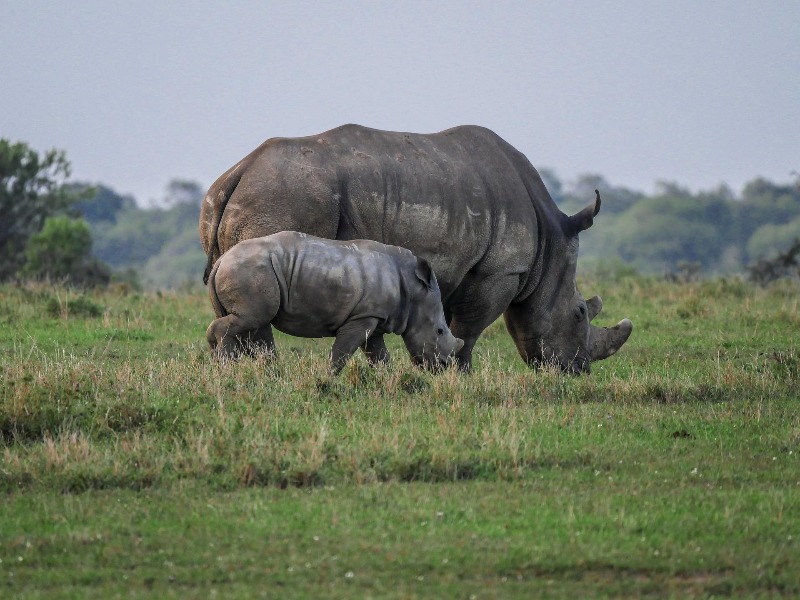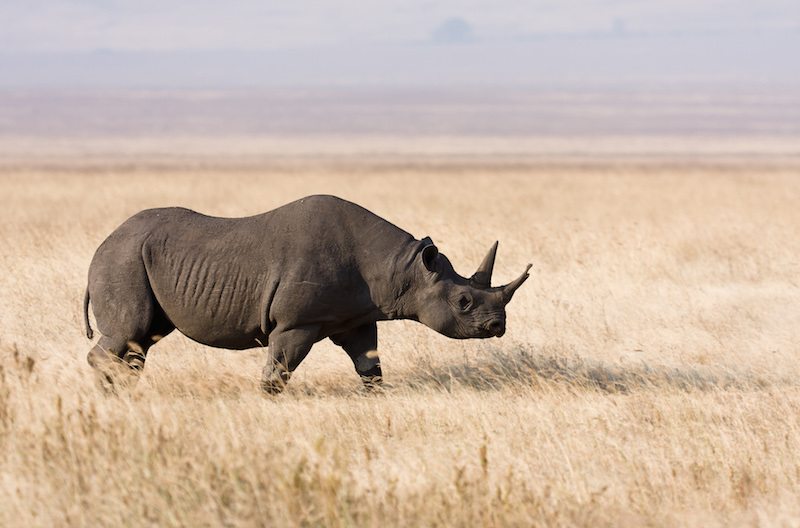Black rhinoceros
Episode #3 of the course “The Most Endangered Species in the World”
Although conservation efforts have been ongoing to save the black rhinoceros throughout Africa, its numbers continue to dip dangerously low; it is close to extinction, with approximately 3,500 left living on the African plains. Black rhinos and white rhinos are both grey, but they differ in their lip shapes, diet, and habitat. Black rhinos graze on bushes and trees using pointed lips to pull leaves into their mouths.
Because resources are limited in their areas, rhinos are territorial and mainly solitary. A mother rhino will live with and raise her young until they are about three years old, teaching them to live on their own. A rhinoceros will use its horn (a precious commodity) to defend its limited resources against other rhinos or predators. They can live full lives that average 45 years.

Black rhinos are nocturnal and graze during the hours of dusk and dawn because they like to escape the heat of the African day in the shade. They roll in the mud near their favorite waterholes to coat their skin for protection from the sun and bugs. Most rhinos have one prominent horn—some have been recorded as large as 5 feet—and many have a smaller secondary horn on the snout. Some rhinos have a third, less prominent horn further up on the skull. All rhinos are coveted for their horns, which are believed in Northern Africa and Asia to be magical and valuable for medicinal purposes.

Therefore, all rhinos are being hunted. Since the beginnings of the 20th century, European travelers to Africa have devastated rhino populations, and the current demand for powdered rhino horn in Asia continues to make poaching highly profitable.
Share with friends

